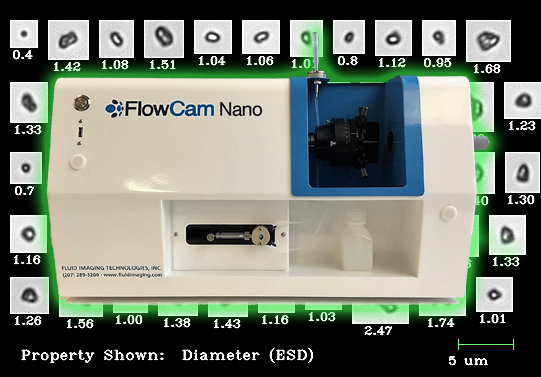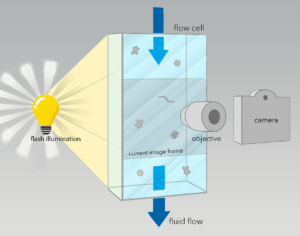
Flow imaging microscopy for produced water analysis
Mike Edwards
Features video Yokogawa Oil droplets, solids, and oil-solids aggregates in a produced water sample imaged by the FlowCam Nano.
Oil droplets, solids, and oil-solids aggregates in a produced water sample imaged by the FlowCam Nano. A recent study has demonstrated flow imaging microscopy to be faster and more informative method to analyze produced water than spectrophotometry. This high-throughput method with Yokogawa FlowCam technology can:
- Produce images of water samples and analyze particulates;
- Differentiate oil droplets from solids using morphological characteristics;
- Measure size of oil droplets and particles;
- Calculate particle size distribution;
- Enable the user to observe oil behavior with images during demulsification;
- Calculate percent oil and percent solid of aggregates.
The nano-flow imaging instrument provides detailed images as small as 300 nm of oil droplets, solids, and aggregates, resulting in accurate particle size measurements.
 Flow imaging microscopy works with a syringe pump that pulls the sample through the flow cell. Particles are back lit using flash illumination to prevent motion blur during image capture.
Flow imaging microscopy works with a syringe pump that pulls the sample through the flow cell. Particles are back lit using flash illumination to prevent motion blur during image capture.
An image of the entire flow cell is then captured by the camera.
VisualSpreadsheet, the FlowCam’s image analysis software, extracts individual particle images from the flow cell image.
During this processing, 40+ physical parameters are measured from each particle including area, circularity and length.
A particle size distribution is calculated — particle classifications can be built based on morphological traits, with the classifications aiding in auto-identification.
The FlowCam Nano introduces the concept of oil immersion microscopy to flow imaging. In traditional microscopy, the specimen is on a glass slide with air between the slide and the objective lens, which causes some light loss due to the refractive index between air and glass.
Watch FlowCam Nano particle image video
https://youtu.be/59ZJfD8Lqxw
With oil immersion microscopy, oil sits between the slide and the objective lens with negligible refractive index, thus delivering maximum light into the lens.
The FlowCam Nano uses this concept in conjunction with a 40x objective to provide highly resolved images never before available for particles in this size range.
This article was contributed by Yokogawa FlowCam.
Print this page